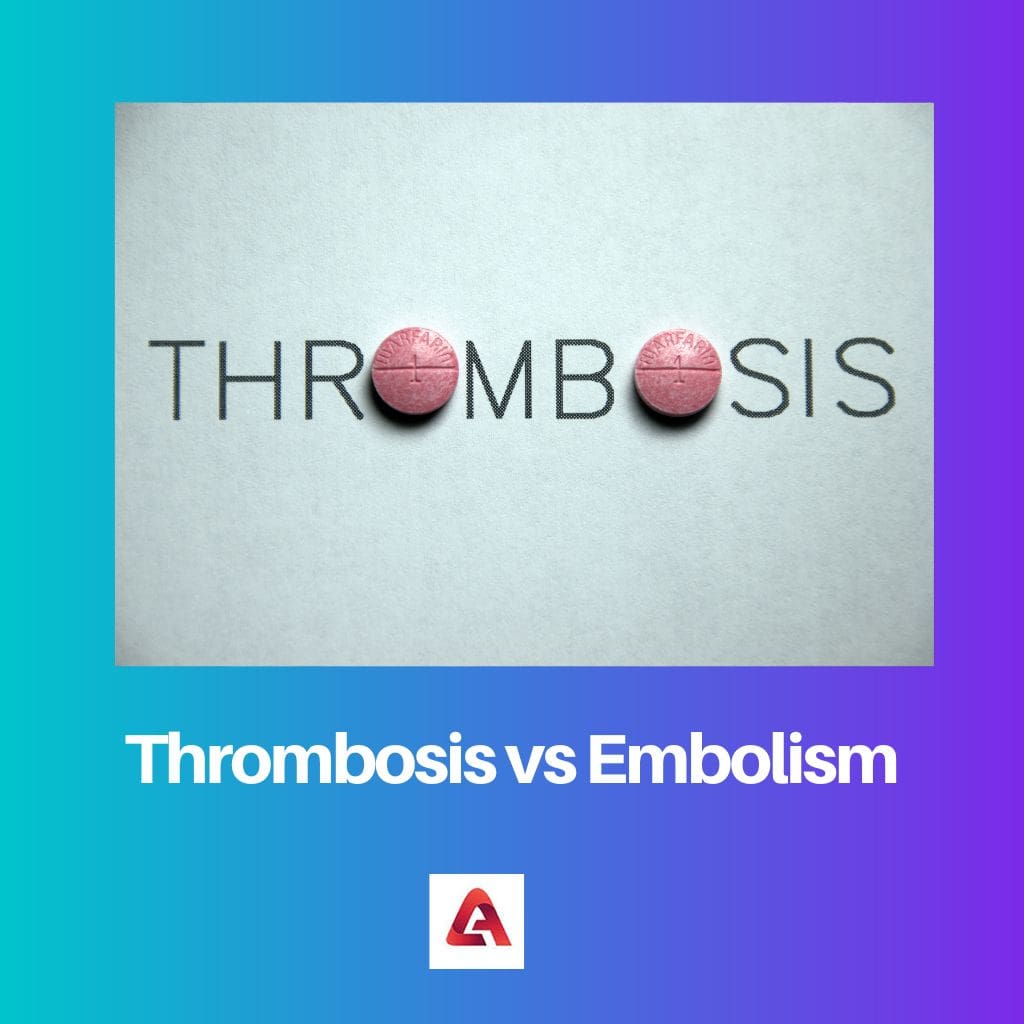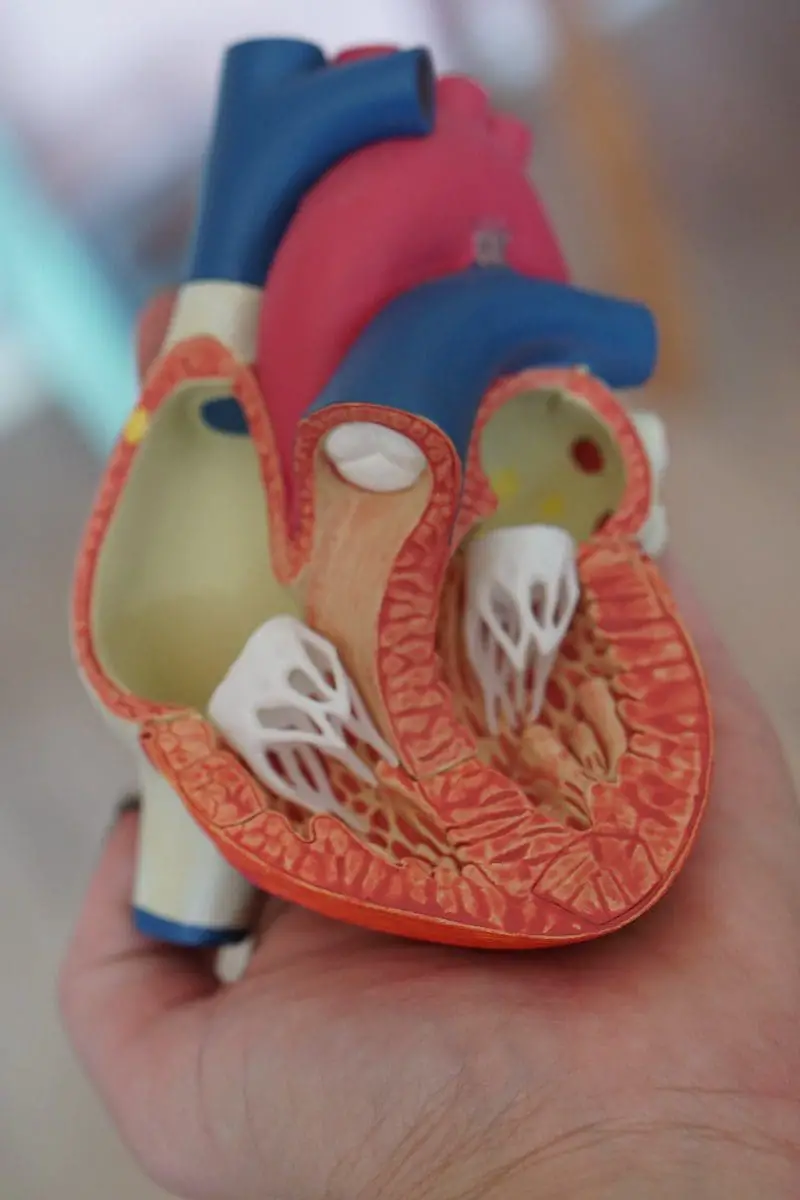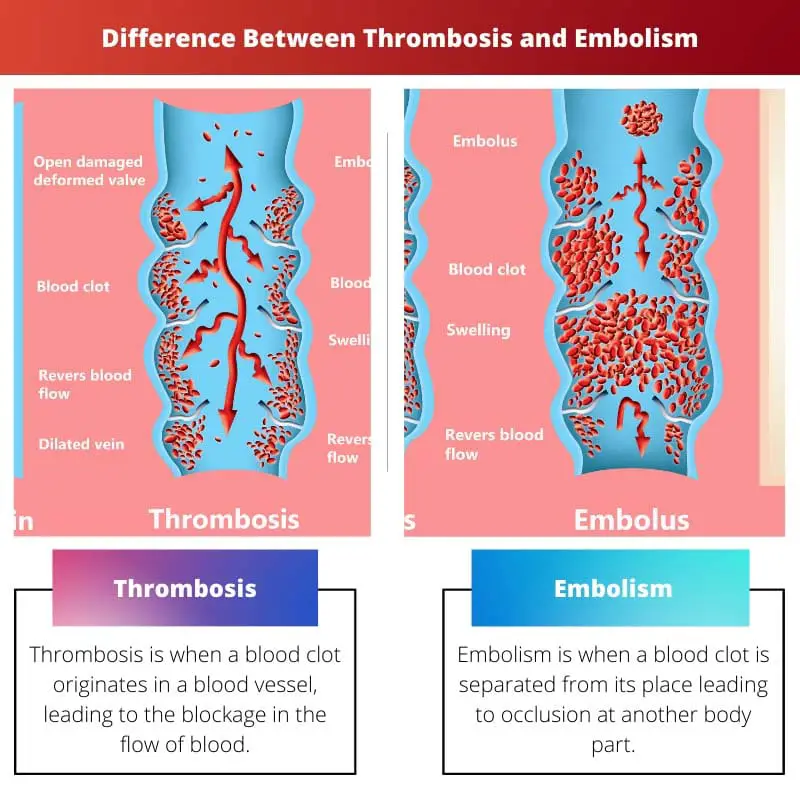Thrombosis occurs when a blood clot forms within a blood vessel, due to factors like injury, inflammation, or abnormal blood flow. Embolism, on the other hand, arises when a clot or other material dislodges from its original site and travels through the bloodstream, blocking a smaller vessel.
Key Takeaways
- Thrombosis is the formation of a blood clot inside a blood vessel, obstructing blood flow.
- Embolism is the obstruction of a blood vessel by an embolus, a blood clot, an air bubble, or a fat deposit that travels from another part of the body.
- While thrombosis occurs locally, an embolism can occur anywhere in the body.
Thrombosis vs Embolism
Thrombosis is caused by immobility, surgery, cancer, hormonal imbalances, and inherited blood disorders. Embolism is the sudden blood vessel obstruction by a detached blood clot or other material that travels through the bloodstream. Risk factors include the same factors as thrombosis.

Comparison Table
| Feature | Thrombosis | Embolism |
|---|---|---|
| Definition | Formation of a blood clot (thrombus) within a blood vessel, reducing blood flow | Blockage in a blood vessel caused by a foreign object (embolus) getting lodged |
| Origin of Blockage | Blood clot forms in the same vessel it blocks | Embolus travels from another location in the body |
| Material of Blockage | Primarily fibrin, platelets, and red blood cells | Can be a blood clot, air bubble, fat droplet, or other foreign material |
| Location | Can occur in any blood vessel (veins more common) | Can lodge anywhere in the circulatory system, but some organs (lungs, brain) are more susceptible |
| Risk Factors | Inactivity, surgery, injury, certain medications, underlying health conditions | Same as thrombosis, plus additional factors like fractures, decompression sickness |
| Examples | Deep vein thrombosis (DVT), coronary artery thrombosis | Pulmonary embolism (PE), stroke (blood clot in the brain) |
What is Thrombosis?
Thrombosis is a pathological condition characterized by the formation of blood clots (thrombi) within the circulatory system. It occurs when the intricate balance between pro-coagulant and anti-coagulant factors is disrupted, leading to the excessive activation of blood clotting mechanisms.
Process of Thrombus Formation
- Initiation: Thrombosis begins with damage to the inner lining of blood vessels (endothelium), triggering a cascade of events. Common triggers include injury, inflammation, or turbulent blood flow patterns.
- Platelet Activation and Aggregation: Upon endothelial injury, platelets adhere to the exposed surface and become activated, releasing various substances that promote further platelet activation and recruitment.
- Coagulation Cascade: Simultaneously, the coagulation cascade is initiated, involving a series of enzymatic reactions that ultimately convert fibrinogen into fibrin, forming a mesh-like structure that stabilizes the developing clot.
- Thrombus Formation: As platelets accumulate and fibrin strands intertwine, a thrombus forms, obstructing the affected vessel.
Types and Clinical Implications
- Arterial Thrombosis: Arterial thrombi develop in areas of high blood flow and are primarily composed of platelets. They can lead to conditions such as myocardial infarction (heart attack), stroke, or peripheral arterial disease.
- Venous Thrombosis: Venous thrombi form in areas of slower blood flow and are rich in fibrin and red blood cells. They are associated with conditions like deep vein thrombosis (DVT) and pulmonary embolism (PE).

What is Embolism?
Embolism refers to the obstruction of a blood vessel by a foreign material, such as a blood clot (thrombus), air bubble (gas embolism), fat droplet (fat embolism), or debris. Unlike thrombosis, where the clot forms at the site of vascular injury, embolism involves the mobilization of material from its original location within the bloodstream, leading to blockage at a distant site.
Process of Embolism Formation
- Embolus Formation: An embolus is any detached material that travels through the bloodstream. It can originate from various sources, including thrombi formed within veins or arteries, fragments of atherosclerotic plaque, or foreign particles introduced during medical procedures.
- Embolization: Once detached, the embolus is carried by the bloodstream until it encounters a vessel that is too narrow for it to pass through, leading to its lodging and subsequent obstruction. The embolus can occlude blood flow partially or completely, depending on its size and the caliber of the vessel it lodges in.
- Tissue Ischemia and Infarction: The obstruction caused by the embolus disrupts normal blood flow to downstream tissues, depriving them of oxygen and nutrients. This can result in ischemia (reduced blood supply) and, if left untreated, tissue necrosis (infarction).
Types and Clinical Implications
- Pulmonary Embolism (PE): Arising from emboli that travel to the lungs, PE is a potentially life-threatening condition associated with symptoms such as dyspnea (shortness of breath), chest pain, and hemoptysis (coughing up blood).
- Cerebral Embolism: Emboli reaching the brain can cause cerebral embolism, resulting in ischemic stroke. Symptoms may include sudden onset of weakness, numbness, or difficulty speaking.
- Peripheral Embolism: Emboli may also affect peripheral arteries, leading to conditions such as acute limb ischemia, characterized by sudden pain, pallor, pulselessness, and paralysis in the affected limb.

Main Differences Between Thrombosis and Embolism
- Origin:
- Thrombosis originates from the formation of a blood clot (thrombus) at the site of vascular injury or within a blood vessel.
- Embolism involves the mobilization of material, such as a blood clot, air bubble, or debris, from its original location within the bloodstream to a distant site where it causes obstruction.
- Formation:
- Thrombosis occurs through a series of processes involving platelet activation, coagulation cascade activation, and fibrin deposition, leading to the formation of a stationary blood clot.
- Embolism results from the detachment of material (embolus) from its site of origin, followed by its migration through the bloodstream until it lodges in a vessel, causing obstruction.
- Location and Effects:
- Thrombosis primarily affects the vessel where the clot forms, leading to local effects such as reduced blood flow, tissue ischemia, and potential infarction.
- Embolism can affect distant sites from the embolus origin, leading to sudden blockage of blood flow, tissue ischemia, and potential infarction in organs such as the lungs (pulmonary embolism), brain (cerebral embolism), or limbs (peripheral embolism).
- Risk Factors:
- Thrombosis risk factors include conditions such as atherosclerosis, endothelial injury, immobility, hypercoagulable states, and genetic predispositions.
- Embolism risk factors may overlap with those of thrombosis but also include conditions that predispose to the detachment of embolic material, such as cardiac arrhythmias, cardiac valve abnormalities, or medical procedures involving vascular manipulation.
- Treatment Approaches:
- Treatment for thrombosis involves anticoagulant therapy to prevent further clot formation and promote clot dissolution, along with measures to address underlying risk factors.
- Treatment for embolism involves thrombolytic therapy to dissolve the embolus, surgical intervention to remove the obstructing material, or mechanical interventions such as thrombectomy or embolectomy. Additionally, preventive measures to minimize the risk of recurrent embolic events are crucial.

I must say, the tone of this article was quite dry. It’s not the most engaging content.
I understand your point, but I prefer the straightforward approach.
I found this article too complex and text-heavy. The information could have been presented in a more concise manner.
I disagree, I appreciate the level of detail provided.
Thank you for explaining the difference between Thrombosis and Embolism in such a clear and detailed way. This article really helped me understand the topic better.
I’m glad you found it helpful!
The article provides valuable insights into Thrombosis and Embolism, well done.
Agreed, it’s always good to learn more about important health topics.
The topic is interesting, but the tone of the article was a bit too dry for my liking.
I appreciate the comprehensive explanation, personally.
I had no idea about Thrombosis and Embolism before reading this. The detail in this article is fantastic.
It definitely expanded my knowledge on the subject!
Learning something new every day! This was an eye-opener.
The article was both informative and engaging, kudos to the author!
Indeed, I hope to see more content like this in the future.
I second that, this was a great read.
I didn’t find the article engaging at all, it felt quite dry and difficult to follow.
It’s a matter of personal preference, some readers appreciate the depth of detail.
The comparison table is very informative, it’s great to have all the information laid out in a structured manner.
Absolutely, it makes it much easier to understand the distinctions between the two conditions.
This article is so insightful, I genuinely enjoyed reading it. A+ for sure!
Couldn’t agree more! It’s great to see high-quality content like this.